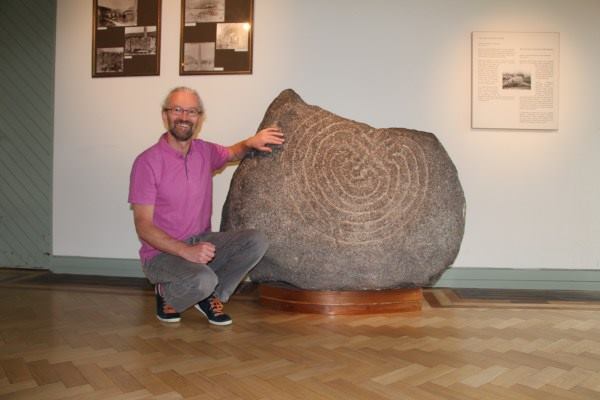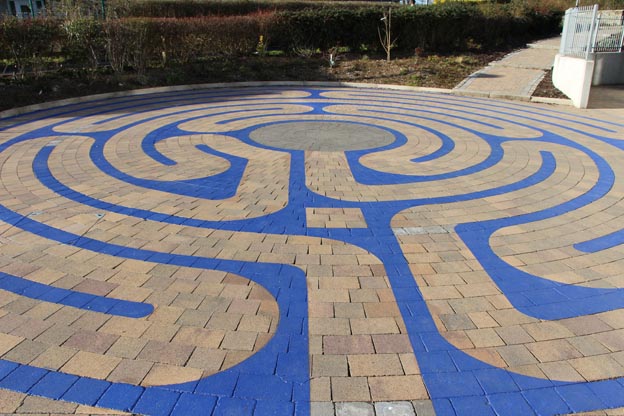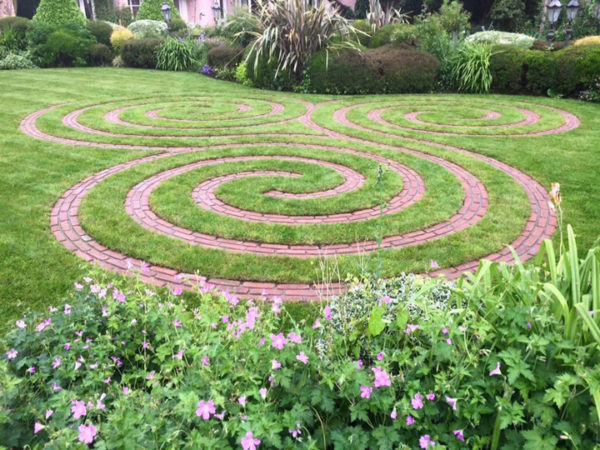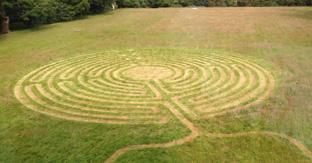
Labyrinth History
Labyrinths have been found in almost every part of the world and used in many cultures over the past 5,000 years. Their origin is a mystery. The oldest labyrinths in the world are difficult to date because they are carved into rocks mainly around the Mediterranean area and in particular Gallicia in Northern Spain and the Val Camonica in Italy. One of the oldest dateable labyrinths, found inscribed on a clay tablet from Pylos, Greece, dates back to 1200 BCE. This labyrinth was of the seven circuit classical design, one of the two main labyrinth designs along with the Chartres labyrinth.
The oldest known labyrinth in Ireland is ‘The Hollywood Stone’, and is on display in the visitor’s centre in Glendalough, County Wicklow. It is estimated to be approximately 1,500 years old and was found at Lockstown Upper, near Hollywood, on one of the ancient pilgrimage routes to Saint Kevin’s monastery at Glendalough.


